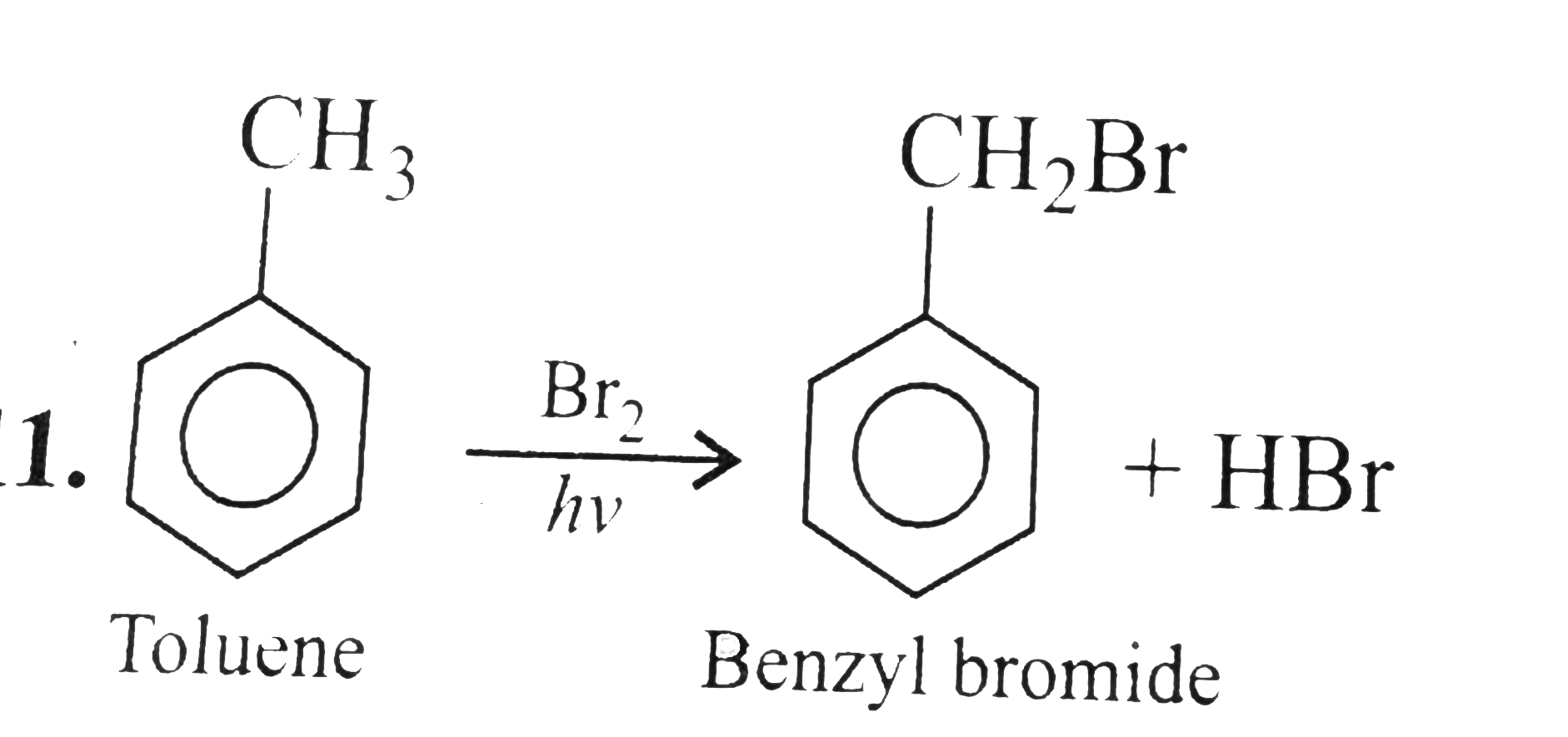Toluene reacts with bromine in the presence of the light to give benzyl bromide, while in presence of it gives p-bromotoluene. Give explanation for the above observation.
Video Solution
Text Solution

This reaction is based on the free radical substituion concept. i.e., it is completed in the form of free radical mechanism.
So, in the presence of sunlight, the substition takes place fromt the side chain while in the presence of , teh substituion takes place from the benzene mucules.
|
Topper's Solved these Questions
- AROMATIC COMPOUNDS AND ALKYL AND ARYL HALIDES BOOK - CENGAGE CHEMISTRYCHAPTER - AROMATIC COMPOUNDS AND ALKYL AND ARYL HALIDES EXERCISE - Archives Subjective Type
4 Videos
- APPENDIX INORGANIC VOLUME 2BOOK - CENGAGE CHEMISTRYCHAPTER - APPENDIX INORGANIC VOLUME 2EXERCISE - Short Answer Type
179 Videos
- BIOMOLECULESBOOK - CENGAGE CHEMISTRYCHAPTER - BIOMOLECULESEXERCISE - Exercises Archives (Analytical And Descriptive)
8 Videos
Similar Questions
Knowledge Check
Toluene reacts with chlorine in the presence of light to give
Abenzyl chlorideBfree-radical substitutionCside chain substitutionDring substitutionChloroform reacts with oxygen in the presence of light to give:
Acarbon tetrachlorideBcarbonyl chlorideCmethyl chlorideDmethylenedichlorideBenzene reacts with CH3COCl in the presence of AlCl3 to give
AC6H5ClBC6H5COClCC6H5CH3DC6H5COCH3
The reaction of toluene with chlorine in the presence of light gives:
View Solution2−Methylbutane on reacting with bromine in the presence of sunlight gives mainly
View Solution2-Methylbutane on reacting with bromine in the presence of sunlight gives mainly
View Solution2−Methylbutane on reacting with bromine in the presence of sunlight gives mainly
View Solution2−Methylbutane on reacting with bromine in the presence of sunlight gives mainly
View Solution
